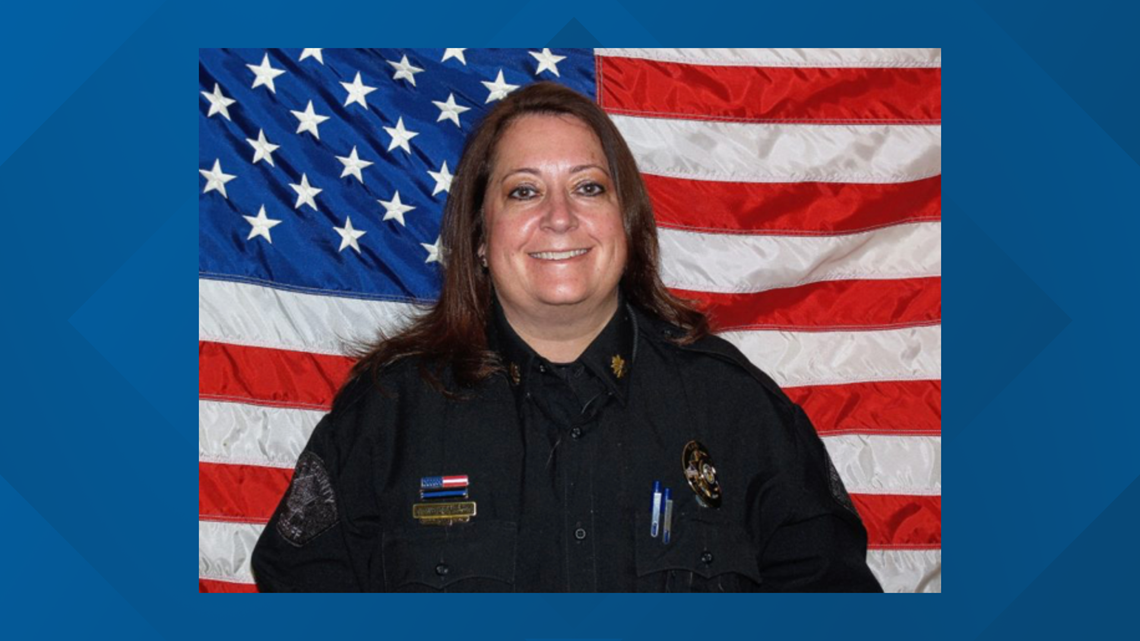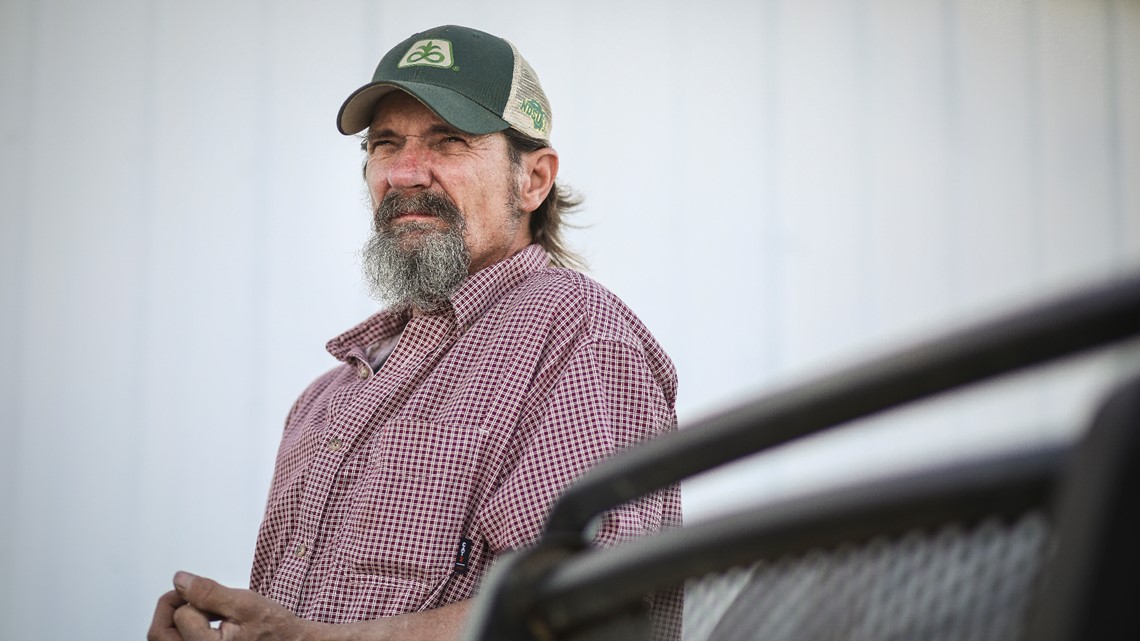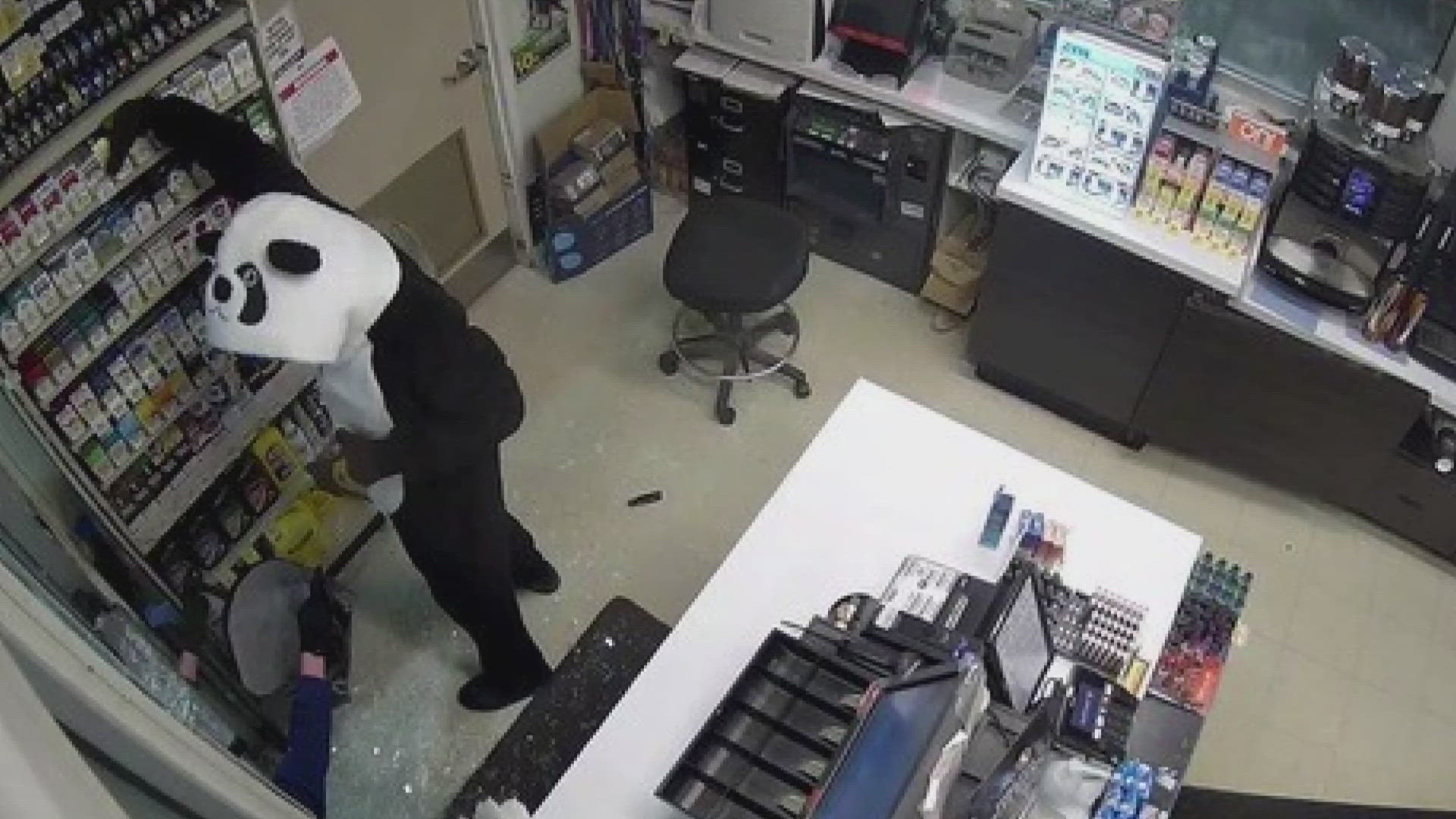KIOWA COUNTY, Colo — Part Two
This is the second in a three-part series about an April 2020 police killing in eastern Colorado that has been shrouded in silence at a time of national and statewide uproar over excessive force. Read Part One here.
Seven people work for the Kiowa County Sheriff's Department – two civilians and five officers who patrol this 1,786 square-mile southeastern plains county. Sheriff Casey Sheridan, known here simply as Casey, was elected in 2014 and 2018, both times without a challenger. Deputy Quinten Stump joined the department April 2019, a year before he and Undersheriff Tracy Weisenhorn shot 39-year-old handyman Zach Gifford to death during am April 9, 2020 traffic stop.
RELATED: Three Bullets to the Back: The striking silence around a police killing in small-town Colorado
>This story is powered by COLab, the Colorado News Collaborative. 9NEWS joined this historic collaboration with more than 40 other newsrooms across Colorado to better serve the public.
Sheridan hired the rookie deputy despite some red flags in his record. A one-time youth rodeo star who wrote on a job application that he wanted to follow his grandfather's footsteps as a cop, Stump had held two previous deputy jobs. He landed the first, in Norwood, Colorado, straight out of the academy in 2018. He lasted three months.


“Let’s just say he had made some mistakes and it didn’t seem to get any better. He wasn’t a good fit. He didn’t take direction very well,” says town administrator Patti Grafmyer.
The Kit Carson County Sheriff's Department hired him a month later. He lasted only four months there. The department declined to say why his time there was so short.
Stump has not returned several phone calls seeking comment. Nor has Sheriff Sheridan.
Earning $33,571 a year, Stump spent much of his time in Kiowa County monitoring traffic along busy U.S. Route 287. Months into the job, he was writing dozens of tickets a day, according to data obtained through a freedom of information request. During one eight-hour shift in December 2019, Stump issued 48 tickets.
“He patrolled the shit out of the roads,” says Tyler Pevler, a former deputy who worked with Stump and, by comparison, says he issued 87 traffic tickets in a year. “I just never trusted the guy, but he wrote a lot of tickets and made the sheriff’s office look good.”
As in most cities and towns, traffic ticket revenue helps fund local government.
Stump’s aggressive policing went beyond prolific ticketing. In December 2019, court records show he ticketed Christian Forney of Greeley for speeding and driving with a suspended license. Forney says Stump handcuffed him, placed him in the back of his patrol car, and returned to Forney’s car to speak with his fiancée. Forney banged his head against the back of the front seat, cursing out of frustration with himself. Stump, he says, ran back, grabbed him from the squad car, threw him into a ditch, wrestled him down and kneed him until other officers arrived.
“I never did anything to him. I never pushed him. I never put my hand on him. It was excessive, to say the least,” says Forney, adding that Stump drove up to 119 miles an hour on the way to the jail.
Forney’s lawyer, Mark Davis, told the DA’s office about Stump’s behavior after Gifford’s shooting. The prosecutor eventually dropped the charges.
General contractor Josh Brown says Stump stopped him because his pickup resembled one driven by a poacher for whom deputies were searching. “First thing, he walks up, grabs his gun and orders me out of the vehicle,” he says. “He was a little aggressive. Actually a lot. … That’s not how it’s done around here.”
Pevler says Stump was part of the reason he quit the sheriff’s office in January 2020. He had complained about his colleague’s crudeness, including “overtures toward women when he would pull them over, talk to or text them, see them.” He says he saw Stump use armed force several times, but ended the interview when asked if that use seemed excessive:
“I don’t really feel comfortable saying anything about that now because I may want another job in law enforcement.”
Undersheriff Tracy Weisenhorn, 46, comes from a family of cops, including a brother who was an officer with the Prowers County Sheriff’s Department. She had worked several law enforcement jobs – the longest was 12 years as a deputy and investigator in Prowers and the most recent was six months as a detective with the Leadville Police Department.


Sheridan, records show, hired Weisenhorn in late January 2020, the same day she authorized him and his staff to conduct a mandatory background check and a week before the department notarized that authorization. She was on the job, then, before Sheridan could have fully vetted her.
“Y’all killed my friend”
Brandon is a small cluster of buildings some refer to as a ghost town in eastern Kiowa County near the Kansas border. The former railroad stop lost its post office in 1963, and all that remains are a handful of homes, two grain elevators on both sides of State Highway 96 and the railroad tracks that run parallel to it. Brandon sits a few miles southeast of where soldiers with the Colorado U.S. Volunteer Cavalry killed at least 230 Arapahoe and Cheyenne people in the 1864 Sand Creek Massacre, and about 20 miles east of Eads.
On the day Weisenhorn and Stump shot Gifford, he was in Brandon at the home of his friend, Bryan Morrell, helping out with some home repairs.
The officers’ accounts of what happened that day are laid out in a 57-page Colorado Bureau of Investigation affidavit for Stump’s arrest warrant obtained under the state law that requires criminal justice records be accessible to the public. That affidavit also includes an interview with Morrell – who is the lone eyewitness – as well as reports from walk-throughs of the scene, forensic analyses and detailed, written summaries of both officers’ body camera footage, which has not been made public.


Weisenhorn told investigators she was on a call in Brandon when she decided to drive by a house she had been surveilling. She said tipsters, whose names she said she could not remember, had reported possible “drug activity” at the home. When she arrived, she told investigators, she saw Morrell and Gifford get into a truck. Morrell was driving.
She followed, pulling Morrell over when he failed to use his turn signal.
It was 2:46 p.m. Stump, out on patrol nearby, arrived shortly afterward.
Weisenhorn told investigators she thought the pair was acting suspiciously once she pulled them over, moving about in the front seat as if “they were hiding something.” She said she asked Morrell and Gifford if they had been using drugs because she could see something in their eyes. “Especially yours,” she said to Gifford. She told investigators that he was fidgety and appeared “very high.”
Both men agreed to be searched, with Weisenhorn patting down Morrell and Stump patting down Gifford. Stump told investigators he did not confiscate a box-cutter and pliers “with a knife-like feel” that Gifford was carrying because he “did not see those items as a threat.” He said he then felt and spotted “a small plastic bag with something in it” in the coin pocket of Gifford’s jeans.
“Zach, do not move,” Stump ordered.
The body camera footage described in the affidavit depicts a scene that immediately escalated as Gifford tried to pull away. Stump had not told Weisenhorn that he found a baggie, not a gun, and Weisenhorn later told investigators she feared Gifford might have a weapon. That kind of fear, if found to be legitimate, generally protects officers from being prosecuted for wounding or killing people.
Stump tackled Gifford, both men tumbling to the ground.
RELATED: Three Bullets to the Back: The striking silence around a police killing in small-town Colorado
The next 48 seconds brought a flurry of grabbing and wrestling – both officers trying to cuff Gifford as he tried to break free, the officers yelling commands, each tasering him at least once, Stump also applying an electric charge directly to Gifford’s upper neck and shoulder, Gifford screaming.
“Stop moving, give me your hands, stop,” Weisenhorn’s body camera, at that point knocked to the ground, captures her saying.
Weisenhorn, cursing, told Gifford she was going to shoot him. The affidavit says body camera footage shows Gifford reaching into his pocket.
“Let him go, let him go,” Stump told Weisenhorn, according to body camera footage referenced in the affidavit. “No, he’s grabbing for something,” Weisenhorn replied.
“I’m going to shoot you. Stop,” Weisenhorn said again as Stump backed away from Gifford, who was on his knees and reaching towards his waistband. On her knees behind Gifford, she had her gun at his back. Stump drew his gun.
Gifford stood and started to run, with Weisenhorn trying unsuccessfully to stop him. Gifford broke away from her. As she stood, the camera on the ground captured Weisenhorn yelling “stop,” firing her gun and moving out of the frame. Stump, out of view, can be heard yelling, “Zach!” followed by a second gunshot, and, two seconds later, a third.
Eighteen seconds later, Weisenhorn – off camera – yelled, “Stop” before a fourth and final shot is heard. Stump, she said, had fired it. Gifford fell to the ground about 24 yards from where the final bullet was fired. Stump radioed that shots had been fired and Weisenhorn called for medical assistance.
Both officers told investigators they could not see Gifford’s hands as he ran and feared he might have a weapon. Stump said he worried, in particular, that Gifford might pose a threat to residents of Brandon who he said would have been home because of the statewide COVID lockdown. Somewhere between six and 11 people live in Brandon, which is considered a ghost town.
Weisenhorn told investigators she found Gifford lying on his stomach, hands at his waistband and “still fighting” when she got to him. She handcuffed him, trying to pat him down, then rolled him on his side. Gifford, shot through a lung, told her he couldn’t breathe, she said.


In her first interview with investigators, she said he asked her to tell his family that he loved them, adding “I have always wanted to die. Just let me die.” She told investigators she assured Gifford that he was not going to die. She started CPR.
Her final exchange with Gifford cannot be corroborated. Weisenhorn at that time was not wearing her body camera, which was still on the ground by the truck, and she had instructed Stump to return to Morrell after she cuffed Gifford.
Weisenhorn also did not repeat her story about Gifford’s alleged dying words in a subsequent interview – this one with her lawyer present. Nor did CBI investigators follow up with her on that point.
Weisenhorn has not responded to several requests for comment.
John Holland, the Gifford family’s lawyer, says, “People who want police to kill them attack the police. Zach was running away from them.”
“It is very troubling that, having shot Zach repeatedly, one of his shooters would try to make it appear that he wanted to die that day. This unfortunately is not an uncommon ploy in unjustified law enforcement killing cases.”
State crime bureau investigators concluded that each officer shot twice, but that only three of their bullets struck Gifford. Only one bullet was recovered, and that was found in his lower back.
The medical examiner's report finds that the lethal wound came from the bullet piercing Gifford’s lung, but investigators said they could not determine who fired it. The report went on to determine Gifford’s death to be a homicide caused by massive blood loss from multiple gunshot wounds. The autopsy found methamphetamine in Gifford’s blood. Two small baggies with residue from meth were found in the grass near his body.
Weisenhorn’s fallen body camera captured Morrell yelling “Y’all killed my friend,” repeating the words several seconds later as if they were a question.
“He was just trying to get away because they were hurting him,” Morrell says months later, his hand trembling at the Thunderbird Café up the highway.
He says he can’t stop thinking about what happened that afternoon. Gifford did nothing to physically threaten either officer, he says, and drug possession should not warrant a death sentence.
“It’s just hard to talk about. Oh, goddamn. Crying,” Morrell says, tearing up.
“If only I’d used my turn signal.”
In Part Three: The blanket of silence that followed Zach Gifford’s killing
This story is brought to you by COLab, the Colorado News Collaborative, a coalition of more than 100 news outlets.
SUGGESTED VIDEOS: Local stories from 9NEWS



